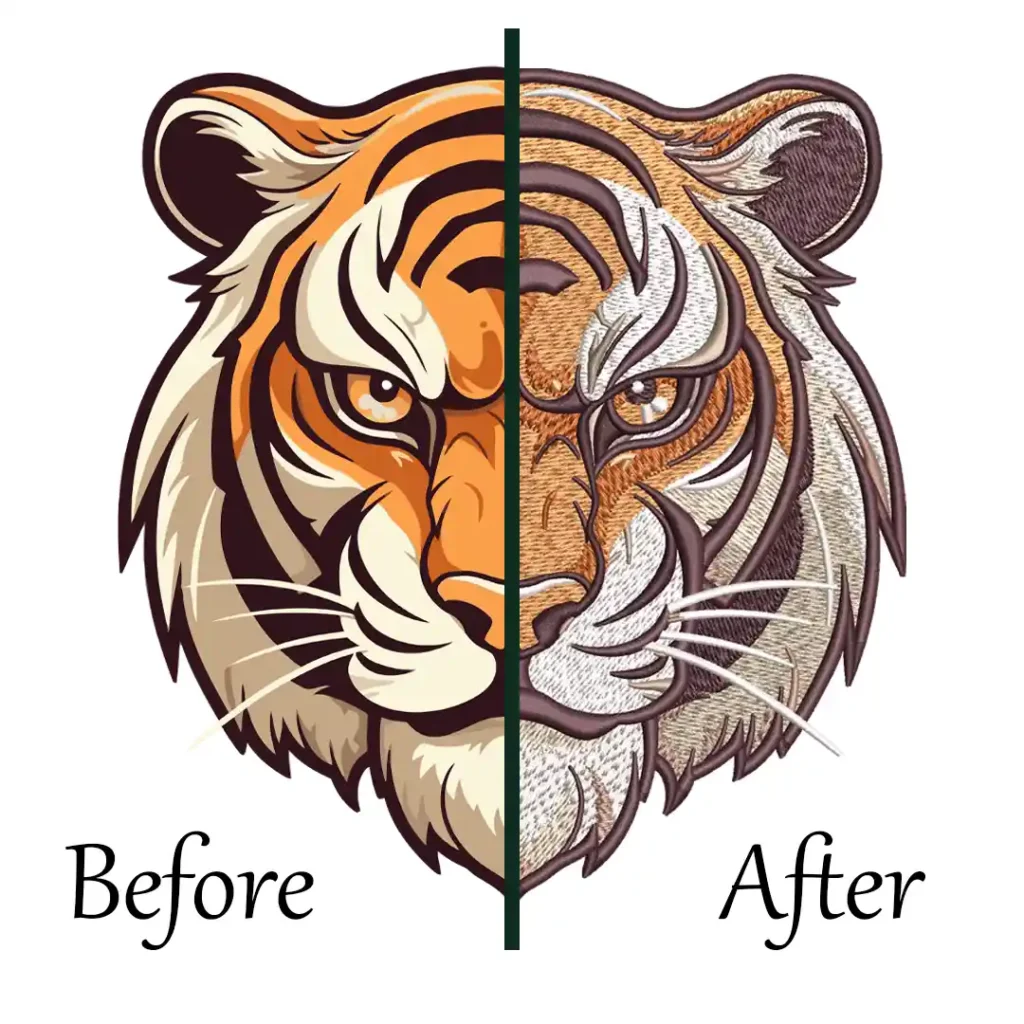Embroidery on polyester fabric can be challenging because it is slippery and stretches easily. But don’t worry, with the right steps, you can create amazing designs on polyester. Polyester is a strong and popular fabric used for clothes, bags, and home items. However, it needs special care during embroidery to avoid problems like puckering or damage.
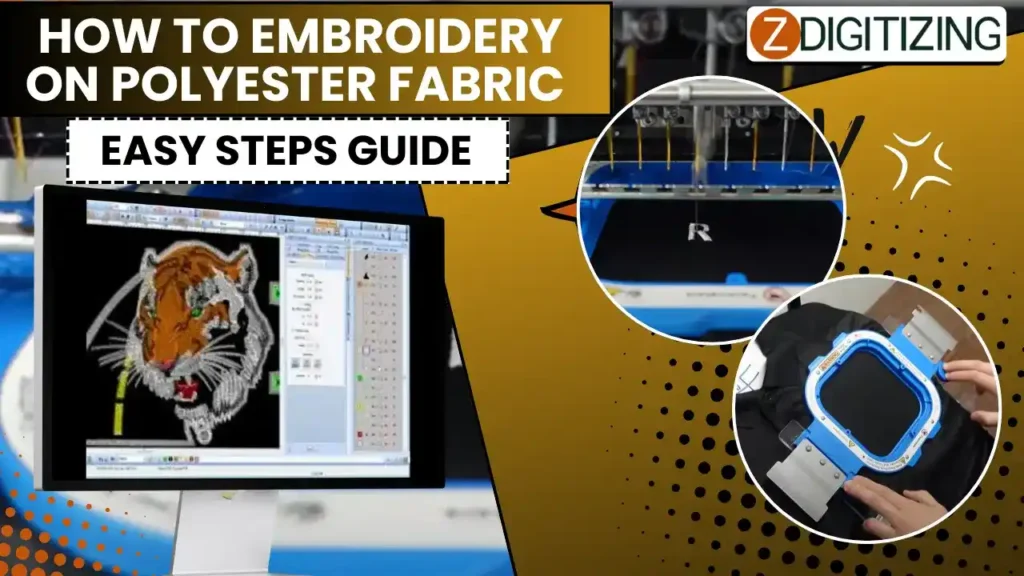
By using the right needle, stabilizer, and thread, you can make your embroidery look perfect. This guide will explain easy tips and steps to help you embroider on polyester without any trouble. Whether you are new to embroidery or want to improve your work, these tips will make it simple and fun. Let’s learn how to do it the right way!
How to Embroidery on Polyester Fabric | Easy Step Guide
Essential Materials for Embroidery on Polyester Fabric
For seamless polyester embroidery, having the right tools is essential. These materials ensure your designs are stable and look professional on polyester fabric.
- Polyester Fabric
- Polyester Embroidery Thread
- Embroidery Machine
- Ballpoint Needles (size 75/11 or 80/12)
- Stabilizer (thick tear-away)
- Embroidery Hoops (preferably plastic)
- Scissors or Snips
- Fabric Marker or Chalk
- Topping Stabilizer (optional, for certain designs)
Embroidery Digitizing & Vector Art Services
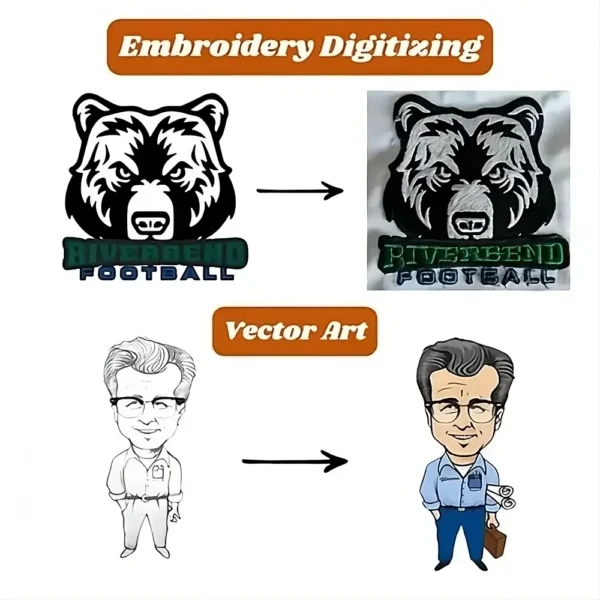
Looking for embroidery digitizing and vector art services that are affordable and reliable? We offer fast turnaround time, guaranteed quality, and the option to preview your design before payment, we make sure you get exactly what you need. Your satisfaction is our top priority, and we’re dedicated to delivering the best results. Don’t wait—try ZDigitizing today and see the difference in quality and service!
Embroidery Digitizing & Vector Art Services
Looking for embroidery digitizing and vector art services that are affordable and reliable? We offer fast turnaround time, guaranteed quality, and the option to preview your design before payment, we make sure you get exactly what you need. Your satisfaction is our top priority, and we’re dedicated to delivering the best results. Don’t wait—try ZDigitizing today and see the difference in quality and service!
1. Polyester Fabric
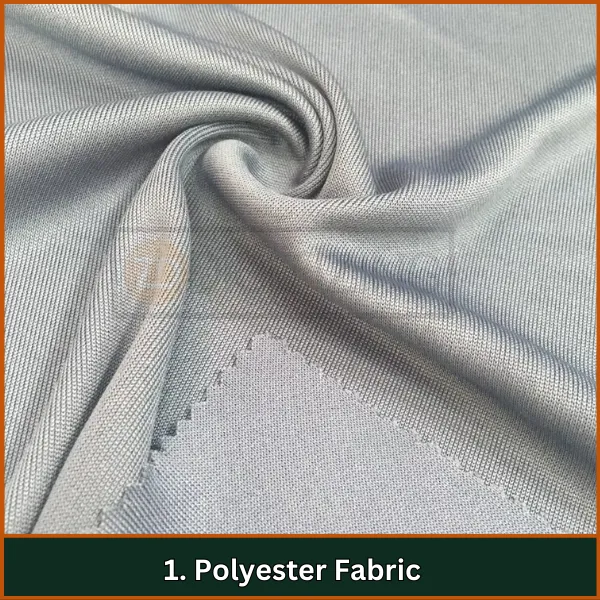
It is a synthetic material known for its durability, lightweight nature, and resistance to shrinking and wrinkles. It is a popular choice in embroidery projects due to its versatile properties, but it comes with its own set of challenges.
Types
- 100% Polyester – Fully synthetic and commonly used in sportswear, bags, and durable clothing.
- Polyester Blends – Mixed with natural fibers like cotton to combine the benefits of both materials, offering softness and strength.
- Microfiber Polyester – A finer version of polyester, often used in delicate garments and accessories.
Challenges
- Stretching Issues – Polyester fabric tends to stretch, which can lead to puckering during embroidery if not properly stabilized.
- Heat Sensitivity – High temperatures can cause polyester to melt or scorch, making it crucial to use the correct needle and stabilizer.
- Slippery Texture – The smooth surface of polyester can make it difficult to hoop or stabilize, leading to movement during stitching.
2. Polyester Embroidery Thread
Thread for polyester fabric embroidery needs to be durable and versatile. Polyester embroidery thread is strong, colorfast, and resistant to bleaching and chemicals. It matches the durability of polyester fabric and stands up to frequent washing, making it perfect for long-lasting designs. For most projects, 40-weight polyester embroidery thread is an excellent choice as it provides a good balance of durability and detail.
3. Embroidery Machine
A reliable embroidery machine with adjustable tension settings is crucial for managing the slippery nature of polyester fabric. It ensures precise stitching and helps prevent puckering during embroidery.
4. Ballpoint Needles (Size 75/11 or 80/12)
Ballpoint needles have a rounded tip that slides between the polyester fibers without tearing them. This prevents fabric damage and reduces the risk of puckering during stitching.
5. Stabilizer (Thick Tear-Away)
Stabilizer keeps the polyester fabric steady during embroidery. Thick tear-away stabilizers work well for lighter designs, while cut-away stabilizers are recommended for dense or intricate patterns to maintain shape and precision.
6. Embroidery Hoops (Preferably Plastic)
Plastic embroidery hoops grip polyester fabric better than wooden hoops, minimizing slippage and ensuring the fabric stays taut during stitching for clean and professional results.
7. Scissors or Snips
Sharp scissors or snips help trim loose threads and stabilizer edges cleanly, ensuring a polished and neat finish for your embroidery projects.
8. Fabric Marker or Chalk
Fabric markers or chalk allow you to mark the fabric for precise placement of the embroidery design. They are easy to remove after stitching, leaving no residue or marks.
9. Topping Stabilizer (Optional, for Certain Designs)
The topping stabilizer prevents stitches from sinking into the polyester fabric, especially on textured or stretchy materials like microfiber or fleece. It ensures the embroidery design remains prominent and clear.
Step-by-Step Process for Machine Embroidery on Polyester Fabric
It requires precision and the right techniques to overcome challenges like fabric stretching and heat sensitivity. Follow these steps to achieve professional results with ease.
Step 1: Prepare the Polyester Fabric

Wash the Fabric: Clean the polyester fabric with a mild detergent and cold water to remove dirt or sizing that could interfere with embroidery.
Iron if Necessary: Lightly iron the fabric on a low heat setting to remove wrinkles. Avoid high heat, as it can damage polyester.
Step 2: Choose and Digitize Your Design
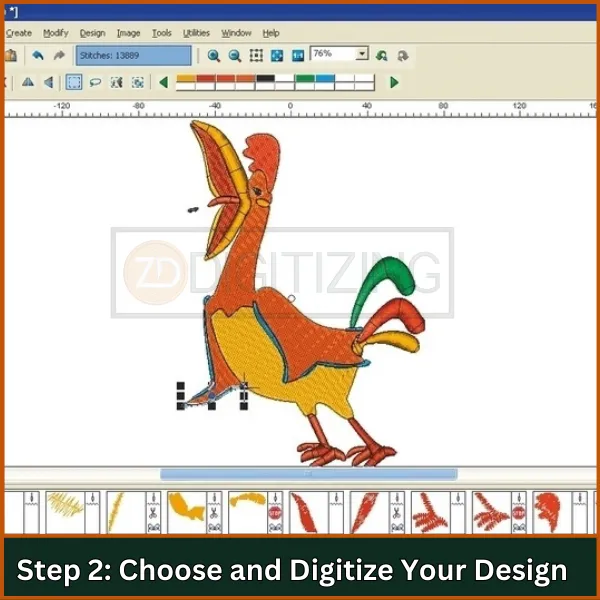
Select or Create a Design: Use embroidery software to choose or create a design. Optimize stitch types (satin, fill, or running stitches) and adjust stitch density to suit polyester fabric.
Bonus Offer: If you’re unsure how to digitize your designs or want a professional touch, our digitizing services at ZDigitizing are here to help. We specialize in converting any artwork or logo into high-quality embroidery files compatible with your machine. Save time and ensure perfect results every time with our affordable and reliable services!
Step 3: Select Thread Colors
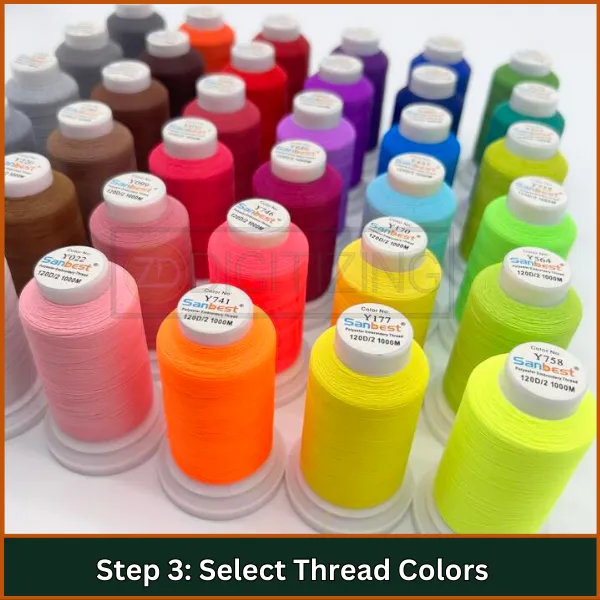
Match the Fabric: Choose thread colors that complement your polyester fabric. Use the correct thread codes to ensure accurate color reproduction.
Step 4: Hoop the Fabric
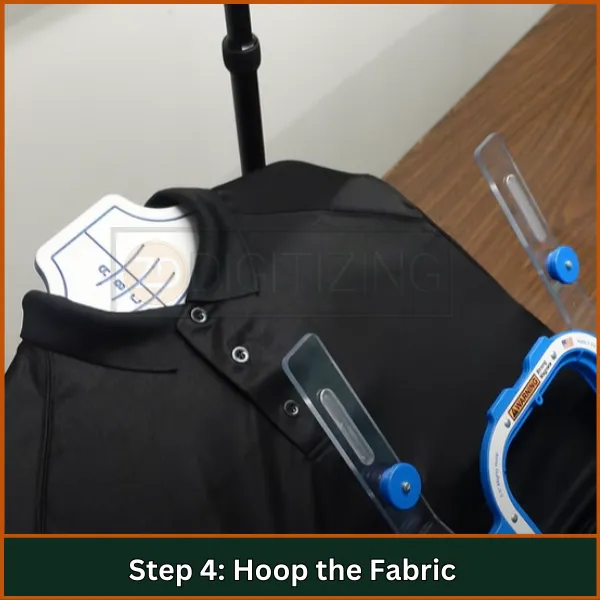
Lay the Stabilizer: Place a tear-away or cut-away stabilizer on the bottom hoop.
Position the Fabric: Lay the polyester fabric flat over the stabilizer, ensuring no wrinkles.
Secure the Hoop: Press the top hoop onto the bottom hoop, keeping the fabric taut but not overstretched. Tighten the hoop screw just enough to secure everything.
Step 5: Mark the Center of Your Design
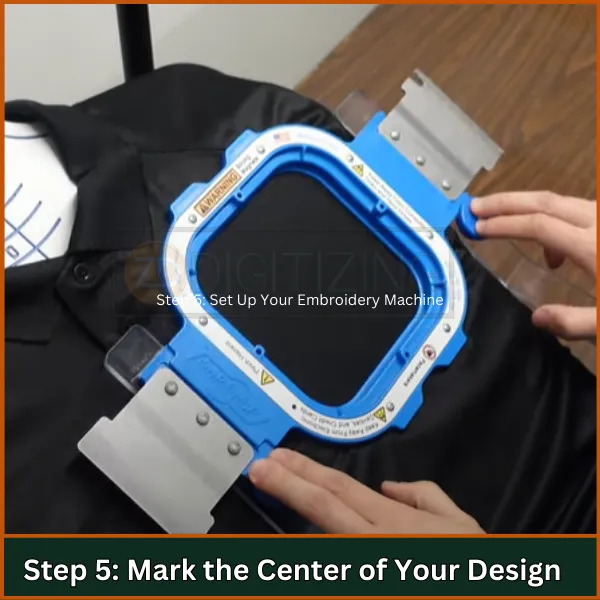
Use Marking Tools: Mark the center of your design on the fabric with a water-soluble fabric marker or tailor’s chalk to ensure precise placement.
Step 6: Set Up Your Embroidery Machine

Align the Hoop: Place the hooped fabric into the embroidery machine, aligning the center marks on the hoop and machine.
Double-Check Placement: Verify that the design aligns correctly before starting.
Step 7: Adjust Machine Settings
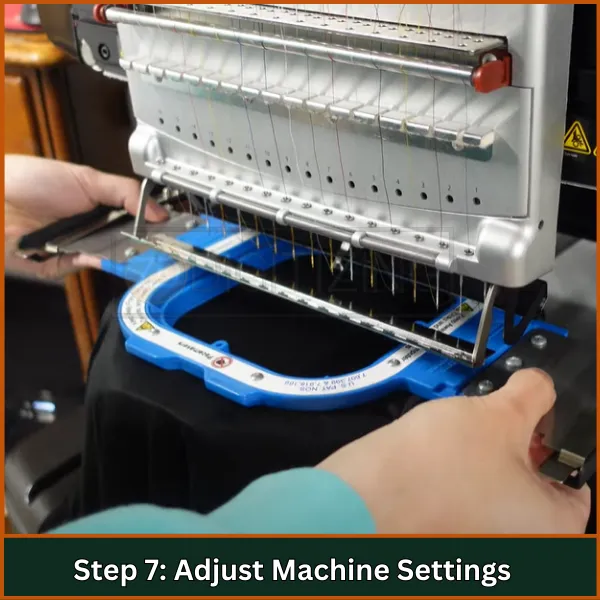
Set Speed: Adjust the machine speed to a moderate rate (500-800 stitches per minute) to manage polyester’s slippery nature.
Choose Stitch Length: Use shorter stitches for dense designs and longer stitches for more textured embroidery.
Step 8: Start Embroidering
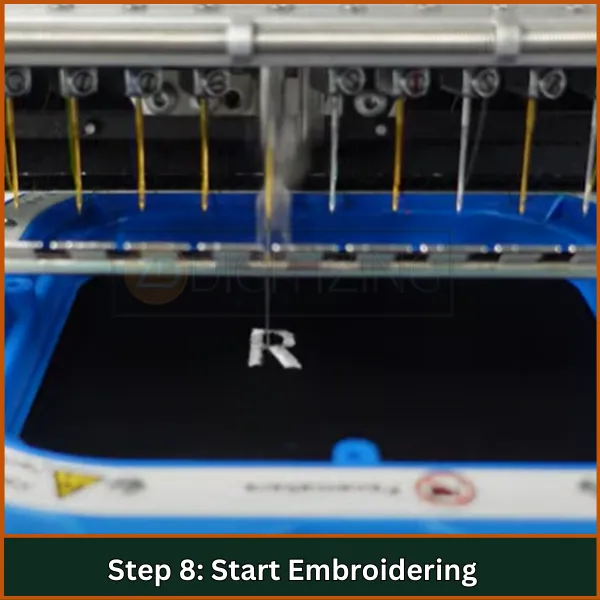
Begin Stitching: Start the machine and monitor the process closely. Watch for any issues like thread breaks or puckering.
Step 9: Check During Embroidery

Pause if Needed: Periodically pause the machine to check for tension issues or fabric shifting. Make adjustments as necessary.
Step 10: Finish and Clean Up

Remove from Machine: Gently remove the hooped fabric once the stitching is complete.
Trim Excess: Carefully trim away any loose threads and stabilizer without damaging the design.
Remove Topping Stabilizer: If used, gently tear away the topping stabilizer from the embroidery surface.
Step 11: Post-Embroidery Care

Wash the Finished Piece: Wash the embroidered item gently to remove fabric marker or chalk marks.
Iron if Needed: Use a low heat setting to press the fabric and smooth out any wrinkles, being cautious with the polyester material.
Tips to Follow When Embroidering on Polyester
Creating perfect embroidery on polyester fabric requires specific techniques and tools to handle its slippery texture and stretchiness. Follow these practical tips to ensure professional results.
- Use the Right Stabilizer: Choose stabilizers like wash-away or cut-away to effectively support the slippery polyester fabric during stitching.
- Choose Stretch Needles: Use ballpoint or stretch needles with rounded tips to avoid cutting through the fibers and prevent skipped stitches.
- Match Thread Content: Opt for polyester or rayon threads to complement the fabric’s stretch and sheen. Avoid cotton threads as they lack flexibility.
- Adjust Machine Settings: Set lower stitch densities and tighter tension to prevent stitch pull issues. Maintain a moderate speed of 500-800 stitches per minute to avoid fabric shifting.
- Practice Proper Hooping Techniques: Ensure the fabric is taut but not overstretched in the hoop to avoid puckering after embroidery.
- Digitize Designs Thoughtfully: Plan designs to stitch from the center outward to reduce stretch and distortion on polyester fabric.
- Use Temporary Adhesive Spray: Apply a light layer of adhesive to the stabilizer before hooping to provide extra control and stability.
- Keep Stitch Density Low: Avoid overly dense designs, as they can distort the fabric. Simple outlines and fills work best for polyester embroidery.
- Test on Scrap Fabric: Practice on a scrap piece of polyester to fine-tune your settings before starting your final project.
Common Mistakes to Avoid with Polyester Embroidery
Embroidery on polyester fabric requires precision and specific techniques to handle its unique characteristics. Avoiding these common mistakes will help ensure your designs come out flawless.
- Using the Wrong Needle: Avoid sharp needles, as they can pierce and damage the polyester fibers. Always use ballpoint needles to glide smoothly between the threads without causing tears.
- Skipping Stabilizer: Polyester’s slippery nature makes stabilizers essential. Failing to use stabilizers like cut-away or wash-away can result in puckering and uneven stitching.
- Overstretching the Fabric in the Hoop: Tightening polyester fabric too much in the hoop can cause distortion and puckering once removed. Keep the fabric taut but not stretched.
- Choosing Inappropriate Threads: Using cotton threads on polyester fabric can lead to breakage and poor durability. Always opt for polyester or rayon threads, which are strong and flexible.
- Ignoring Stitch Density: High-density designs can cause puckering and distortion on polyester. Adjust stitch density to ensure the design isn’t too heavy for the fabric.
- Setting the Machine Speed Too High: Running the embroidery machine at high speeds increases the risk of fabric shifting and uneven stitches. A moderate speed (500-800 stitches per minute) is ideal for polyester.
- Using Too Much Heat: Polyester is sensitive to high temperatures, which can cause it to melt or warp. Use low-heat settings for ironing or during the embroidery process.
- Failing to Mark the Design: Embroidering without marking the fabric can result in misaligned designs. Use a water-soluble marker or chalk to ensure proper placement.
Embroidery Digitizing & Vector Art Services

Looking for embroidery digitizing and vector art services that are affordable and reliable? We offer fast turnaround time, guaranteed quality, and the option to preview your design before payment, we make sure you get exactly what you need. Your satisfaction is our top priority, and we’re dedicated to delivering the best results. Don’t wait—try ZDigitizing today and see the difference in quality and service!
Embroidery Digitizing & Vector Art Services
Looking for embroidery digitizing and vector art services that are affordable and reliable? We offer fast turnaround time, guaranteed quality, and the option to preview your design before payment, we make sure you get exactly what you need. Your satisfaction is our top priority, and we’re dedicated to delivering the best results. Don’t wait—try ZDigitizing today and see the difference in quality and service!
Conclusion
Embroidery on polyester fabric can be easy if you follow the right steps and use the correct tools. With proper needles, stabilizers, and techniques, you can create beautiful and professional designs without any trouble. Polyester may seem tricky at first, but with practice, it becomes simple and fun.
To make your embroidery process even smoother, ZDigitizing is here to help! We offer high-quality digitizing services at affordable rates with super-fast turnaround times. Our services come with a quality guarantee and a free design preview option.
If you’re trying us for the first time, enjoy an exclusive 50% discount on your first order! Don’t miss this chance to get perfect designs for your embroidery projects.
Click here to get started now!
FAQs
Yes, polyester fabric can be embroidered, but it requires proper stabilizers, needles, and thread. Using the right techniques ensures smooth and professional results without damaging the fabric.
Simple and lightweight designs, like satin stitches and running stitches, work best on polyester fabric. Dense designs may cause puckering, so it’s important to adjust stitch density accordingly.
Yes, use ballpoint needles to avoid tearing the fabric and polyester or rayon threads for durability and flexibility. Avoid cotton threads, as they lack stretch and may break.
Yes, polyester fabric can stretch during embroidery, leading to puckering or distortion. Using a good stabilizer and avoiding overstretching in the hoop can help prevent these issues.

